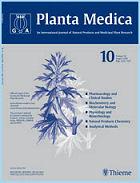 “Purpose of review: To evaluate the impact of flavonoids and cannabinoids as anti-inflammatory and antiallergic treatments on the anterior surface of the eye.
“Purpose of review: To evaluate the impact of flavonoids and cannabinoids as anti-inflammatory and antiallergic treatments on the anterior surface of the eye.
Recent findings: Allergic conjunctivitis and dry eye syndrome are common ocular surface diseases that have been treated with traditional pharmacological measures, e.g. corticosteroids, antihistamines. Given the side-effect profiles of these medications and the growing interest in complementary treatment modalities as part of integrative medical interventions, well known flavonoids, such as quercetin and catechin, are under investigation for topical and systemic application methods for relief. As flavonoid derivatives, pycnogenol and epigallocatechin gallate have alleviated dry eye symptoms, including lacrimal gland inflammation, tear secretion, and the stability of the tear film. Research on ocular cannabinoid receptors and response to synthetic cannabinoids are also being considered for therapy of anterior ocular disorders. The expansion of herbal formulations provides a framework for future treatment regimens for ocular surface disorders.
Summary: Flavonoids and cannabinoids show promise as potential complementary treatment for allergic diseases because of their anti-inflammatory and antiallergic properties. Several studies implementing ocular and systemic application of these compounds show potential in becoming adjuvant treatment strategies for improving quality of life while also managing ocular surface disease processes.”



 “Pancreatic cancer is particularly refractory to modern therapies, with a 5-year survival rate for patients at a dismal 8%.
“Pancreatic cancer is particularly refractory to modern therapies, with a 5-year survival rate for patients at a dismal 8%.

